- Joined
- Jun 5, 2017
- Messages
- 16,330
- Likes
- 70,185
Imo people here are confusing the purpose of a light artillery it is a tactical weapon used for quick deployment.



Our vajra literally would be world class that will create a benchmarking standard's like Merkeva and T 14's. Mark my word's.General Dynamics Light tanks for US militray.



Something like this can be totally made in India with A JV between CVRDE and any major defences company.
L&T is the most potent contenders since they have experience from k 9 Vajra.
The MOD needs to make up its mind rest all is within our reach.
All the mess could only be solved by one thing only, remember in 70's and early 80's why we were able to porcument defense products despite only lower defense budget despite subsidized product's from USSR's was due to the Defence ministry was many time's directly controlled by the PMO's . Then PM's procured many defence equipment's like Mig 29's, T 72's and BMP 2, could be fast tracked by that came at the cost of domestic products like Hal's proposed Deep strike aircraft never gone beyond search's and paper's.yep. 2.7x.
agreed...
ott, I was surprised to know we pay about 100cr more for an mki from HAL than an ready mki from Russia.

I’ve taken assumptions about Cost of Goods Sold as % of Revenue, Salaries as % of Revenue, etc. from Bharat Electronics for the domestic OEM. The GST rate is assumed to be 18%, and the effective Income Tax Rate for employees of the domestic OEM is assumed to be 15%. The full set of assumptions can be seen in the image below.We assume zero offsets because frankly I don’t understand how to factor those in without turning this into a full-time project for six months.
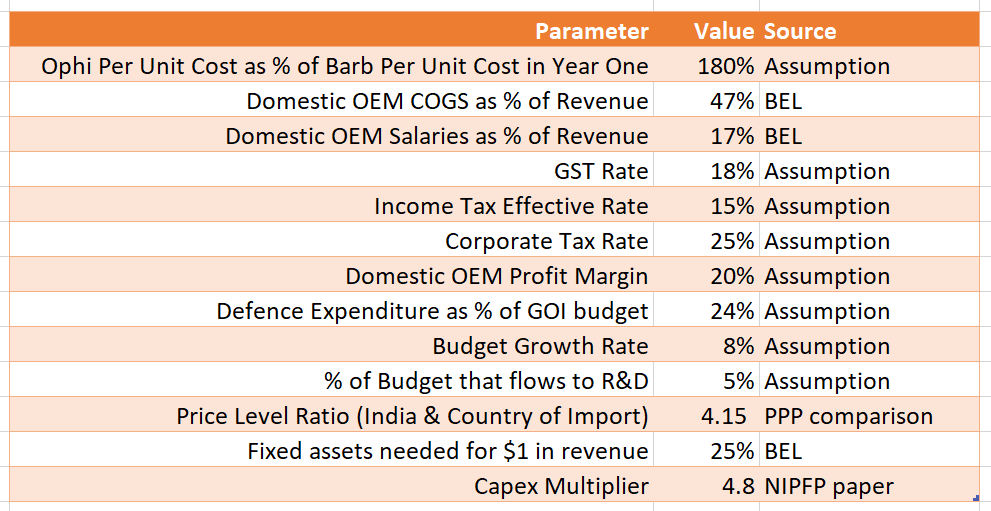
 Year Two
Year Two
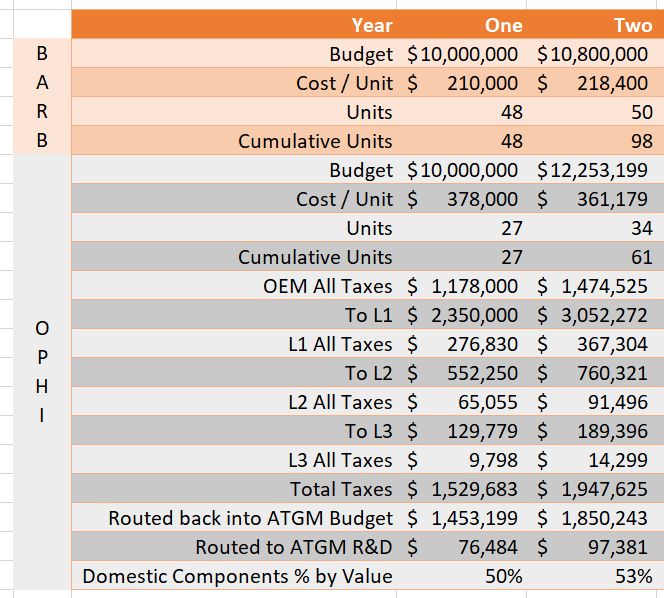
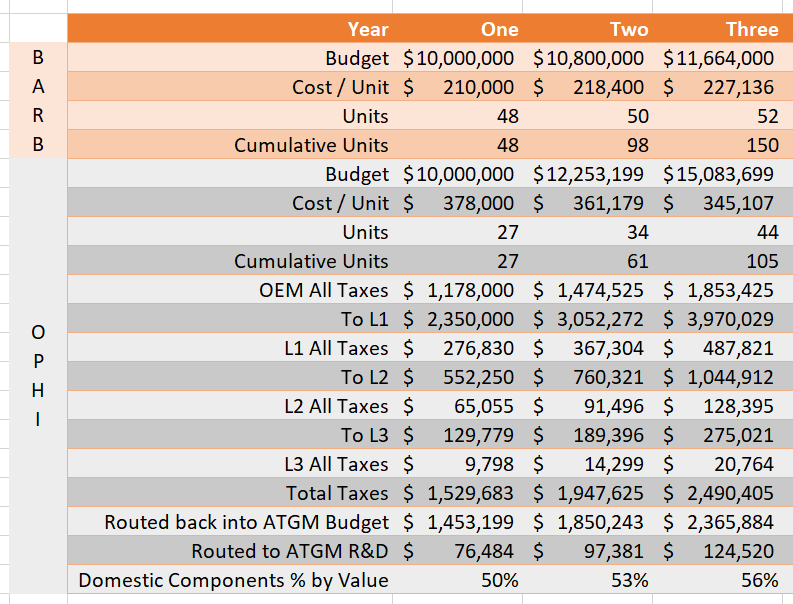 Ten Years
Ten Years
3. Over 10 years, with increasing indigenisation of components, the per unit cost of the Ophi declines by 33% and it becomes more than competitive with respect to Barb even if you ignore other economic benefits (let’s not even mention the strategic advantages of controlling the supply chain for weapons systems we use).a. Earned $472 million in revenues
b. Paid $62 million in taxes (GST, Income Tax, Corporate Income Tax)
c. Consumed $3.12 million for Research & Development
d. Grown indigenous content to 77% of Ophi by value
So, for $148 million spent organically by GOI on procuring Ophis (i.e. excluding taxes that flow back), $115 million in economic activity gets generated, the AF get 99.83% more ATGMs, and domestic OEMs earn $472 million in revenues.

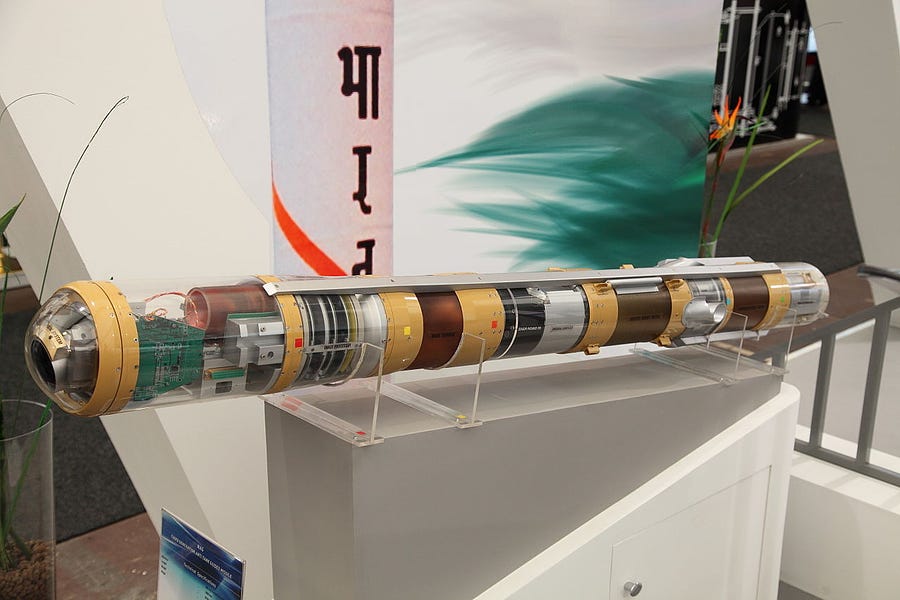
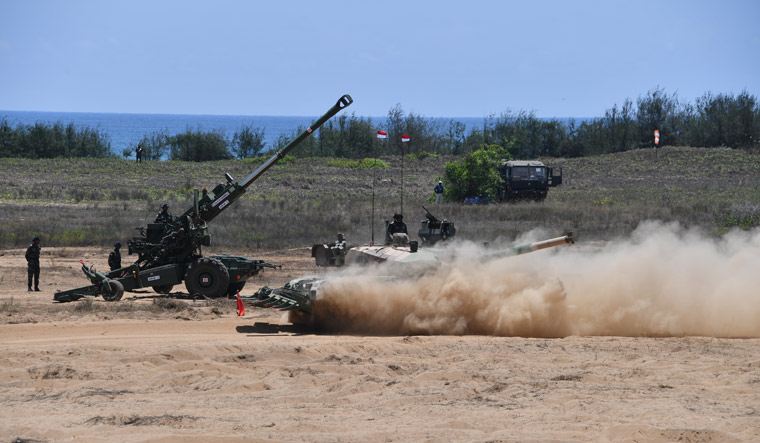

India Set To Ban Import of Weapons That Can Be Produced Indigenously
In keeping with the Aatmanirbhar Bharat Abhiyan, the Defence Ministry proposes to ban the import of weapons that can be made in the country.
This suggestion has been made in the second draft of the Defence Procurement Policy (DPP) 2020, in line with the announcements made during the Aatmanirbhar Bharat presentations in March. The DPP 2020 will now be called Defence Acquisition Procedure (DAP) 2020, according to the draft put out by the Ministry.
The Defence Ministry will notify a list of weapons/platforms banned for import, which will be updated from time to time based on the requirements of the various Services, the draft said. The preparation of this negative list is on.
Besides, a budget head has been created by the Defence Ministry for ‘Make in India’ projects and a provision is being made for domestic capital procurement.
An industry body representative welcomed the move, saying it will mark a fundamental shift in India’s approach that has evolved to include acquisition of technology instead of just procurement of equipment. This is also being seen as a booster for MSMEs.
According to the 48th report of the Parliamentary Standing Committee on Defence, India’s major equipment imports include rockets, simulator and component repair facility for tanks from Russia; laser designation pods, radars, aircraft pods, radios, weapons for ‘Garud’ commandos and missiles from Israel; aircraft, helicopters, missiles, artillery guns and simulators from the US, and aircraft, ammunition, bimodular charge system and high zone modules of artillery guns from France.

Local Capabilities
India currently exports indigenously developed patrol vessels, helicopters, sonars and radars, avionics, radar warning receivers, small arms, small calibre ammunition, grenades, telecom equipment, coastal surveillance gear, simulators, bullet-proof jackets and body armour.
These will be the low hanging fruits for completely shutting the doors to imports.

India Set To Ban Import of Weapons That Can Be Produced Indigenously
Defence Ministry preparing negative list; new budget head soon for ‘Make in India’ projects In keeping with the Aatmanirbhar Bhara...www.indiandefensenews.in
Sir, when the requirement is of about 1580 towed pieces and there is a crunch of funds - the price has to the major factor except for a few guns in ULH category.Sir is price the issue?
Steel artillery and Titanium alloy artillery will most likley have different tenders. They aren't each other's Competition, ULHs price is justified.
| Languishing in the strategically-vulnerable position of being among the top three arms importers in the world for years, India now wants to build a major defence industrial base (DIB) for self-reliance in weapon systems and exports to other countries within the next five years. The defence ministry on Monday released a draft defence production and export promotion policy (DPEPP 2020), with the stated objective of achieving a turnover of Rs 1,75,000 Crores ($ 25 billion), including export of Rs 35,000 Crore ($ 5 billion) in aerospace and defence goods and services by 2025. A similar draft policy in 2018 had set out similar goals, but nothing much came out of it. The estimated size of the existing Indian defence industry is around Rs 80,000 crore, with the public sector’s contribution being almost 80% of it. There is no getting away from the fact that India desperately needs to bolster its fledgling DIB by getting the private sector to jump into defence production in a major way. The public sector, which includes DRDO and its 50 labs, four defence shipyards, five defence PSUs and 41 ordnance factories, also concurrently needs to be drastically overhauled to deliver cutting-edge weapon systems without huge time and cost overruns. The ongoing military confrontation with China has only served to further drive home this point with the 15-lakh strong armed forces scrambling to import a wide array of weapon systems, from drones and assault rifles to missiles and ammunition, to maintain operational readiness along the northern borders. But whether the stated goals of the draft DPEPP 2020, which is envisaged as an “overarching document to provide a focused, structured and significant thrust to defence production capabilities”, can be achieved in five years remain to be seen. The draft DPEPP says the aim is to reduce dependence on imports and take forward "Make in India" initiatives through domestic design and development, as also promote export of defence products as part of the overall ‘Atmanirbhar Bharat’ policy. DRDO, for instance, will set up missions in select fields in consultation with the armed forces and other scientific and industrial establishments to develop futuristic weapon systems. These range from hypersonic, ballistic and cruise missiles to armoured vehicles, gas turbine engines, submarines, fifth-generation fighter jets, transport aircraft, robotics and airborne sensors. The draft policy brings out multiple strategies with the focus areas being procurement reforms; indigenization and support to MSMEs/Startups; optimization of resource allocation; investment promotion, FDI and ease of doing business; innovation and R&D; DPSUs and ordnance factories; quality assurance and testing infrastructure; and export promotion. The policy comes after the government in May made it clear the armed forces will have to shed their penchant for exorbitant foreign weapon systems unless they can be made in India through joint ventures with global armament and aviation majors. The government had also announced the import of certain weapons would be banned through a progressively-expanding negative list, while the FDI limit would be hiked to 74% from the existing 49% in the defence production sector through the automatic clearance route. With an annual defence budget of about $70 billion, India is behind only the US ($732 billion) and China ($261 billion) in terms of military expenditure around the globe. It is also the second-largest buyer of foreign weaponry after Saudi Arabia in the world, accounting for 9.2% of the total global arms imports during 2015-2019, as was earlier reported by TOI. |


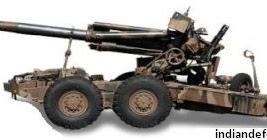
| India Inc on Sunday said the Centre's decision to impose restrictions on import of 101 weapons and military platforms, and creation of a separate budget for domestic capital procurement in the current financial year is a ''path-breaking'' reform towards becoming self-reliant and will boost indigenous defence manufacturing. In a major reform initiative to boost the domestic defence industry, Defence Minister Rajnath Singh on Sunday announced restrictions on import of 101 weapons and military platforms, including artillery guns, assault rifles and transport aircraft. "The Ministry of Defence is now ready for a big push to #AatmanirbharBharat initiative," Singh said on Twitter while making the announcement. He said the Ministry of Defence (MoD) has prepared a list of 101 items for which the embargo on imports is planned to be progressively implemented between 2020 and 2024. "MoD has also bifurcated the capital procurement budget for 2020-21 between domestic and foreign capital procurement routes. A separate budget head has been created with an outlay of nearly Rs 52,000 crore for domestic capital procurement in the current financial year," the Defence Minister tweeted. Welcoming the initiative, CII Director General Chandrajit Banerjee said the defence minister's announcement of negative import list of defence systems and platforms marks the launch of a new glide path for 'Aatmanirbhar Bharat'. "Announcement of Rs 52,000 crore for domestic capital procurement coupled with the list of 101 items for import embargo gives a tremendous boost to Aatmanirbhar Bharat and indigenous defence manufacturing," he added. Godrej & Boyce, which provides solutions for aerospace and defence, said the government's decision will provide a much-needed fillip to Indian defence manufacturing companies. "As a long-term partner with deep partnerships with key strategic organizations like DRDO and ISRO for over 30 years, we look forward to developing a domestic eco-system to help boost India's domestic defence manufacturing capabilities in India and support the vision of self-reliance,” said Godrej & Boyce CMD Jamshyd N Godrej. The CII termed the announcements as "path breaking" and stated, "Today is a historic day for Indian industry in the defence and aerospace. Can assure the Defence Minister that the Indian defence and aerospace industry will rise to the challenge and opportunities therein." S P Shukla, Chair, FICCI Defence Committee, said the move is a great leap forward towards building a self-reliant India. "FICCI applauds the announcement of 101 #defence items for embargo on imports. A great leap forward for #AtmanirbharBharat in RakshaUtpadan," Shukla tweeted. "Great move to earmark Rs 52k cr for domestic capital procurement. It fulfills a request by FICCI Defence Committee to provide long-term visibility on defence procurement plans. Industry can now plan its capex & production capacity," he said in another tweet. Assocham Secretary General Deepak Sood said with India being amongst the largest importers of weapons, ammunition and high technology systems for the armed forces, self reliance in defence production is the most desired policy initiative. "Increased capabilities in defence production not only offer a great economic opportunity for the domestic industry, but also give an immense strategic advantage to the country in a fast evolving geo-political situation," he added. The list of 101 embargoed items comprises some high-technology weapon systems like artillery guns, assault rifles, corvettes, sonar systems, transport aircraft, light combat helicopters (LCHs), radars and many other items. Singh said all necessary steps would be taken to ensure that timelines for domestic production of equipment identified under the negative list for import are met, adding the measures will include a co-ordinated mechanism for hand-holding of the industry by the defence services. "The embargo on imports is planned to be progressively implemented between 2020 and 2024. The aim behind promulgation of the list is to apprise the Indian defence industry about the anticipated requirements of the armed forces so that they are better prepared to realise the goal of indigenisation," he said. |
